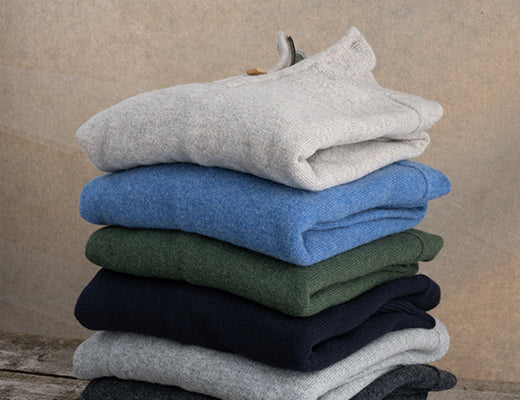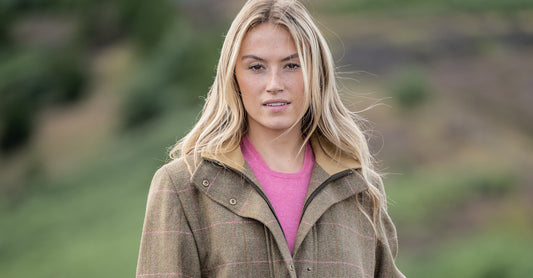
All you need to know about caring for Lambswool
1 Aug 2015Washing and Drying Lambswool
Washing and drying your lambswool sweater of any type properly is perhaps the most important way to look after your investment and ensure your knitwear stays looking good for years and years. There are essentially 3 ways to clean a lambs wool sweater or a pair of 100% lambswool socks. Here we talk you through the advantages and disadvantages of each.Hand Washing Lambswool
Hand washing is the safest way to wash lambswool if you are in any doubt about whether it is treated machine washable lambswool. At Humes Outfitters we recommend hand washing for all our William Lockie lambswool, merino and super geelong. For lamsbwool knitted accessories, follow the same advice. Socks that are referred to as 100% lambswool should be checked for any added properties before washing as care instructions may differ. Lambswool socks are often mixed with a synthetic, durable component to prevent wear underfoot - this is completely normal and does not subtract from the quality of the sock.
Step One Wondering what temperature to wash wool in? Turn your garment inside out and submerge in a solution of warm water (lukewarm to warm is the best temperature to wash wool in, between 30-40°c) and gentle wool wash product – not regular detergent. It’s important the water is not hot. Gently squeeze the suds through it. Do not rub, wring or stretch the garment. Spot treat any problem areas with a squirt of neat detergent and massage gently with fingertips.
Step Two Rinse your lambswool sweater in warm water too and repeat as necessary until the water runs clear. It’s important to keep the water temperature even throughout the hand washing cycle. Moving the garment from warm water to cold water will cause the fibres to constrict.
Step Three Gently press the water out and place the garment lengthwise on a clean, dry towel. Roll up the towel and press to squeeze out excess water – do not wring or twist. Unroll the towel and smooth the garment into its original shape. Button up cardigans, pull pockets straight and ensure that sleeves and hems are smoothed flat to avoid unsightly wrinkles. Lay it flat on a clean dry towel and allow it to air-dry, or use a flat drying rack if you have one.
Machine Washing Lambswool
Lambswool has many more ‘scales’ than cashmere (which can be safely machine washed), fibres that can lock together during the abrasive tumbling of machine washing. So, over time machine washed lambswool, even on a wool cycle will lose its soft appeal. However, some lambswools are specially treated so they can be safely machine washed. It is always best to check the manufacturer’s care instructions usually printed on the care label on the inside body seam. If in any doubt then hand washing is safest option, see above. If the lambswool is safe to machine follow the method below:
Step One Turn your garment inside out and use a wash bag to protect it from abrasion. Place in the machine and select the most delicate setting for wash and spin at 30ºC. One of the advantages of a delicate machine washing is that the temperature remains the same throughout.
Step Two Lay the garment flat on a clean dry towel and smooth it into its original shape. Button up cardigans, pull pockets straight and ensure that sleeves and hems are smoothed flat to avoid unsightly wrinkles. Allow it air-dry flat, or use a flat drying rack if you have one.
Care and Storage
Pilling
Pilling is a natural process that happens to all natural yarns after a certain period of wear. It does not mean the garment is in any way faulty. Pilling is the bobbling effect that occurs when fibres become knotted together. It’s caused by friction during wear or by the build-up of static electricity underneath other garments. Its most common in areas such as the underarms which sustain more movement, friction and moisture. These bobbles – known as ‘pills’ – can either be picked off or shaved off using a wool razor or lambswool comb. These are easily purchased for just a couple of pounds.Storing Lambswool
Fold garments rather than hanging them which can create shoulder dimples and distort the shape of the garment. If you’re super diligent or storing for any length of time fold the garment around tissue and seal in a plastic storage box. Clean your garment before storage, as fresh stains that may not yet be visible will oxidise and become fixed during storage. Using mothballs, lavender or cedar chips help protect against moths. See also How to Care for Cashmere.
If you are interested in any of our lambswool products or have any questions, please call our friendly customer service team on 01573 224 620.


